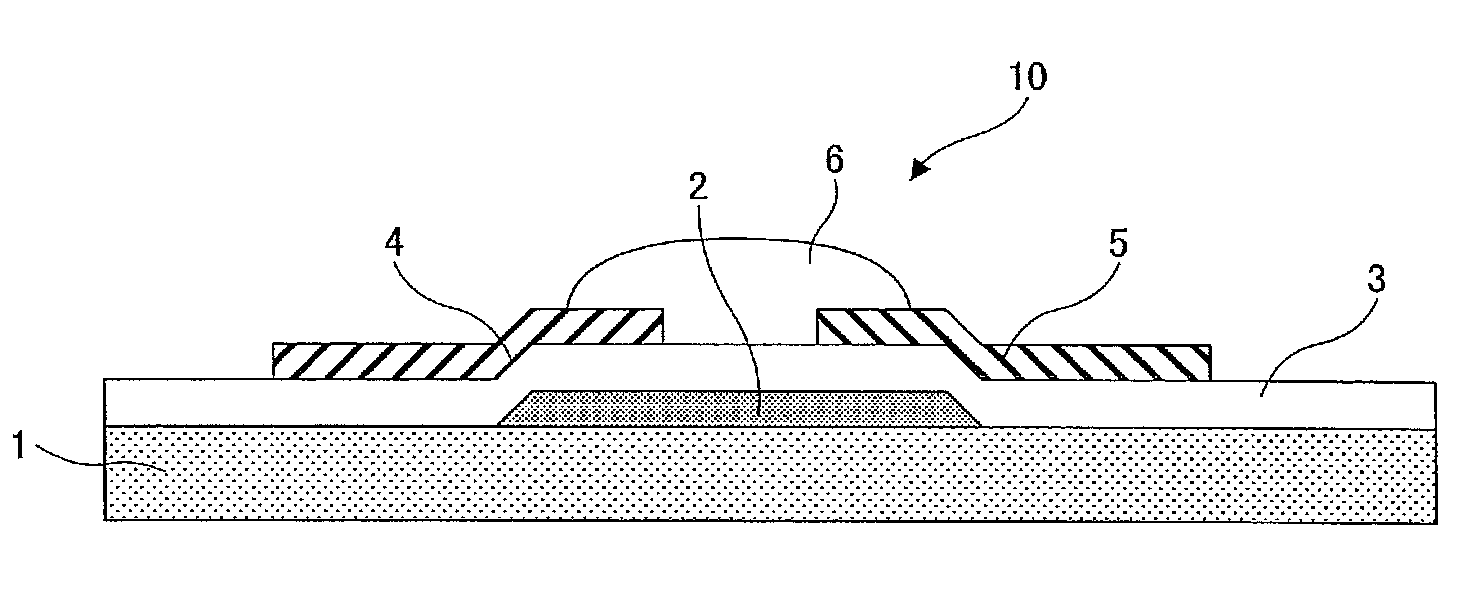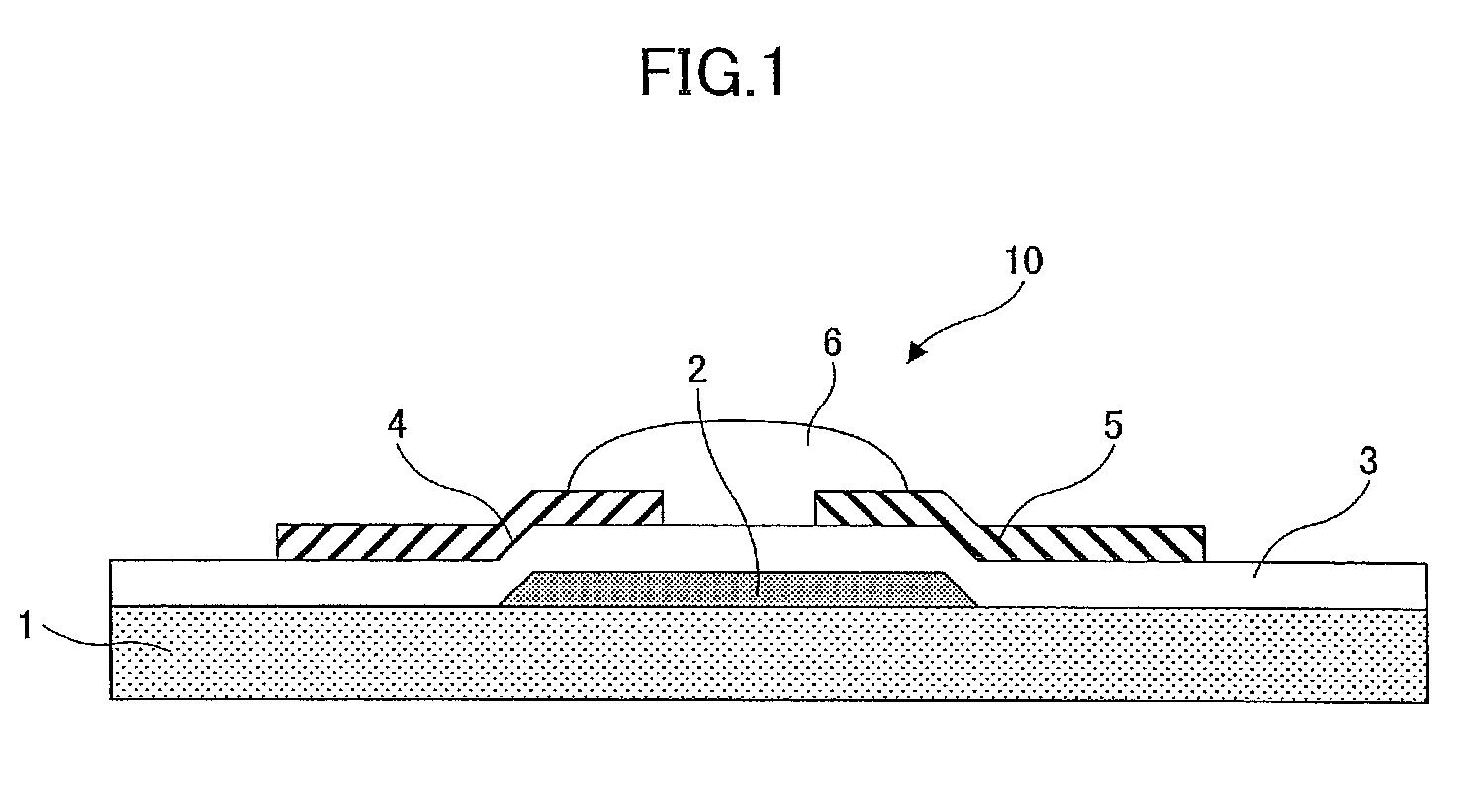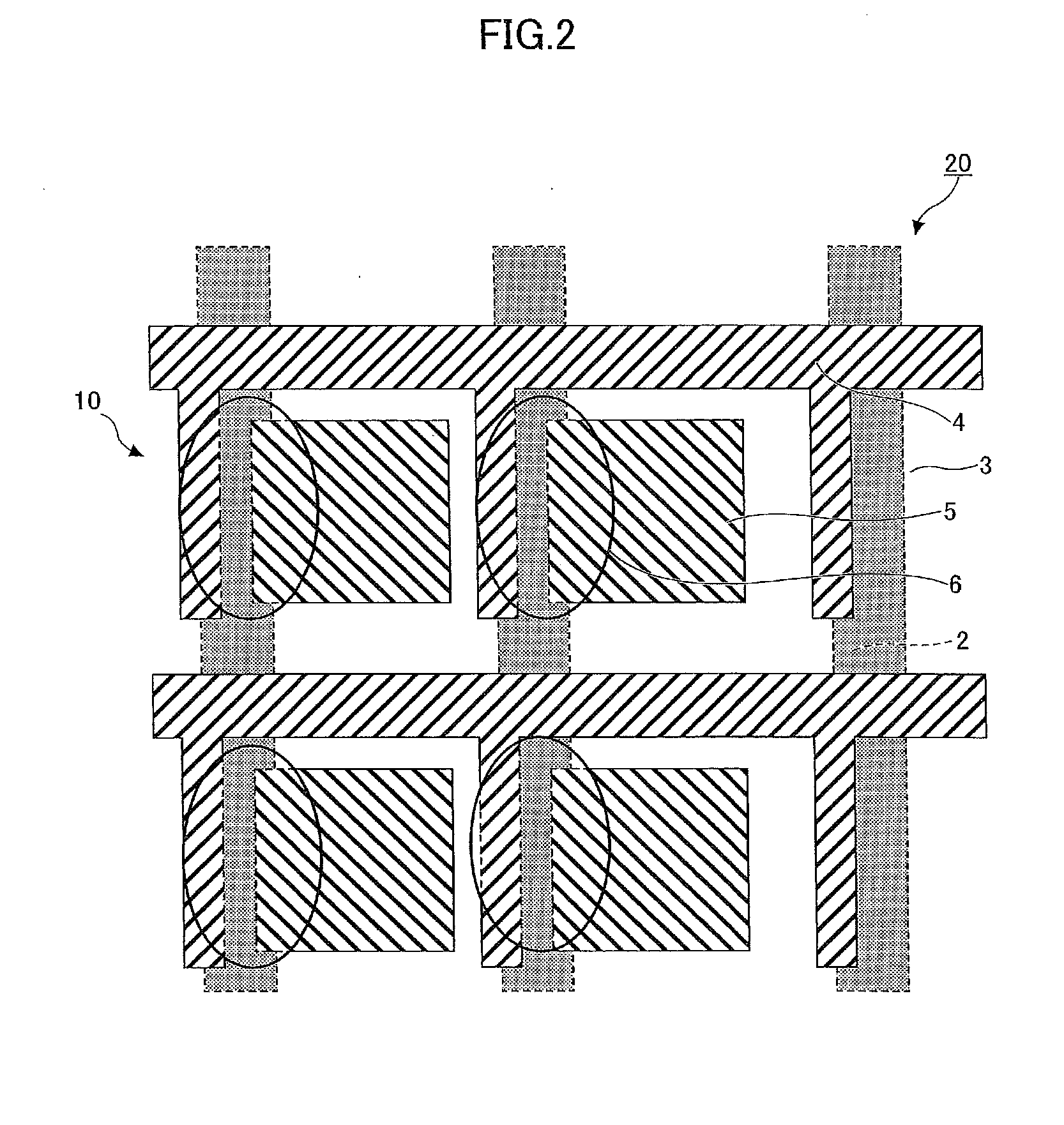Organic transistor, organic transistor array, and display device
a technology of organic transistors and display devices, applied in semiconductor devices, solid-state devices, thermoelectric devices, etc., can solve the problems of increased power consumption, degraded transistor properties, crosstalk when displaying pixels, etc., and achieve the effect of decreasing the off curren
- Summary
- Abstract
- Description
- Claims
- Application Information
AI Technical Summary
Benefits of technology
Problems solved by technology
Method used
Image
Examples
example 1
Practical Example 1
[0063]By performing a vacuum deposition method using a shadow mask, an adherence layer (not shown) made of Cr having a film thickness of 3 nm and the gate electrode 2 made of Al having a film thickness of 100 nm were formed on the glass substrate 1. Next, by performing a CVD method, the gate insulating film 3 made of polyparaxylylene having a film thickness of 500 nm obtained from a di-monochloro-paraxylylen solid dimer was formed on the gate electrode 2. Furthermore, by performing a vacuum deposition method using a shadow mask, patterns of the source electrode 4 and the drain electrode 5 made of Au having film thicknesses of 50 nm were formed on the gate insulating film 3. The channel width was 140 μm and the channel length was 10 μm. Next, the inkjet method was performed to print the organic semiconductor layer 6 in an island-like shape with the use of a solution made of a material expressed by the chemical formula (A), on the gate insulating film 3 having the s...
example 2
Practical Example 2
[0068]The organic semiconductor layers 6 were formed as stripes on the gate insulating film 3 with the source electrode 4 and the drain electrode 5 formed thereon. Otherwise, the organic transistor array 30 was obtained in the same manner as that of practical example 1.
[0069]Next, the on current and the off current were measured in the same manner as that of practical example 1. The on current Ids was −4.66×10−8 A (Vg=−20 V), the off current Ids was −3.81×10−11 A (Vg=+20 V), and the on / off ratio (Vg=−20 V / Vg=+20 V) was 1.22×103.
example 3
Practical Example 3
[0073]The organic semiconductor layer 6 was formed, by a spin-coating method, over the entire the gate insulating film 3 with the source electrode 4 and the drain electrode 5 formed thereon. Otherwise, the organic transistor array 40 was obtained in the same manner as that of practical example 1.
[0074]Next, the on current and the off current were measured in the same manner as that of practical example 1. The on current Ids was −3.76×10−8 A (Vg=−20 V), the off current Ids was −4.55×10−10 A (Vg=+20 V), and the on / off ratio (Vg=−20 V / Vg=+20 V) was 8.26×10.
PUM
 Login to View More
Login to View More Abstract
Description
Claims
Application Information
 Login to View More
Login to View More - R&D
- Intellectual Property
- Life Sciences
- Materials
- Tech Scout
- Unparalleled Data Quality
- Higher Quality Content
- 60% Fewer Hallucinations
Browse by: Latest US Patents, China's latest patents, Technical Efficacy Thesaurus, Application Domain, Technology Topic, Popular Technical Reports.
© 2025 PatSnap. All rights reserved.Legal|Privacy policy|Modern Slavery Act Transparency Statement|Sitemap|About US| Contact US: help@patsnap.com



